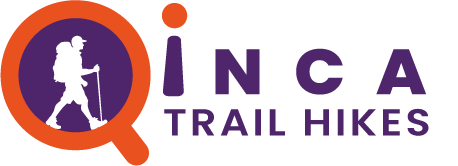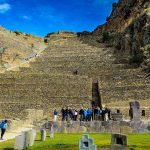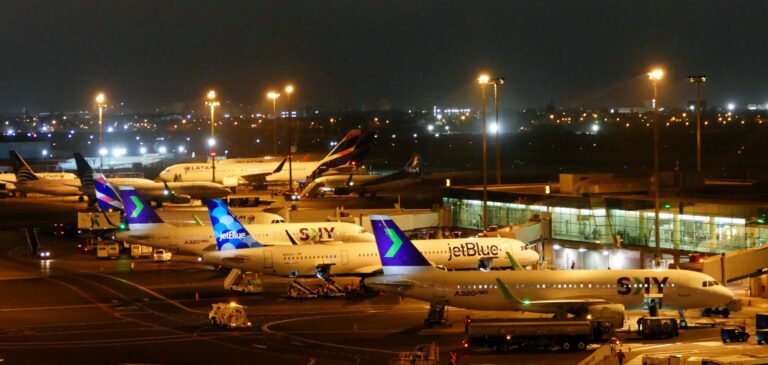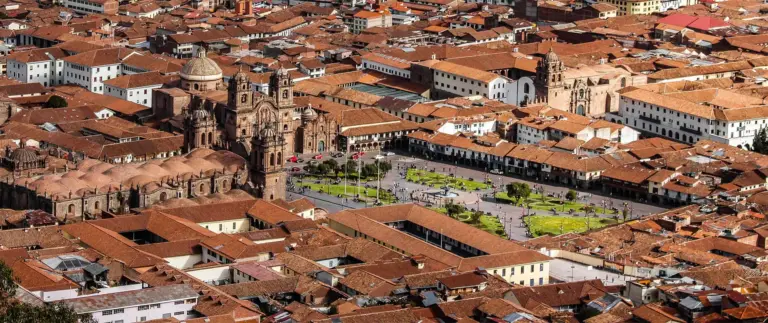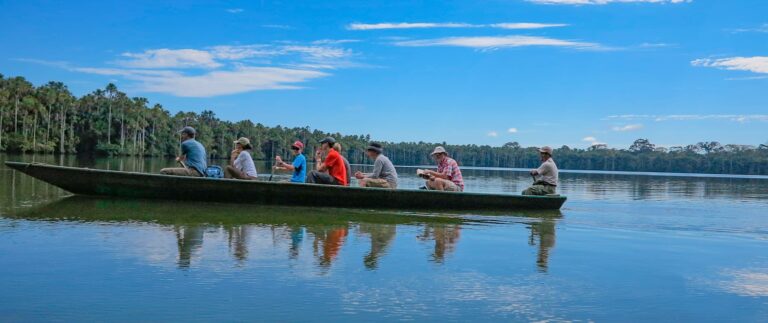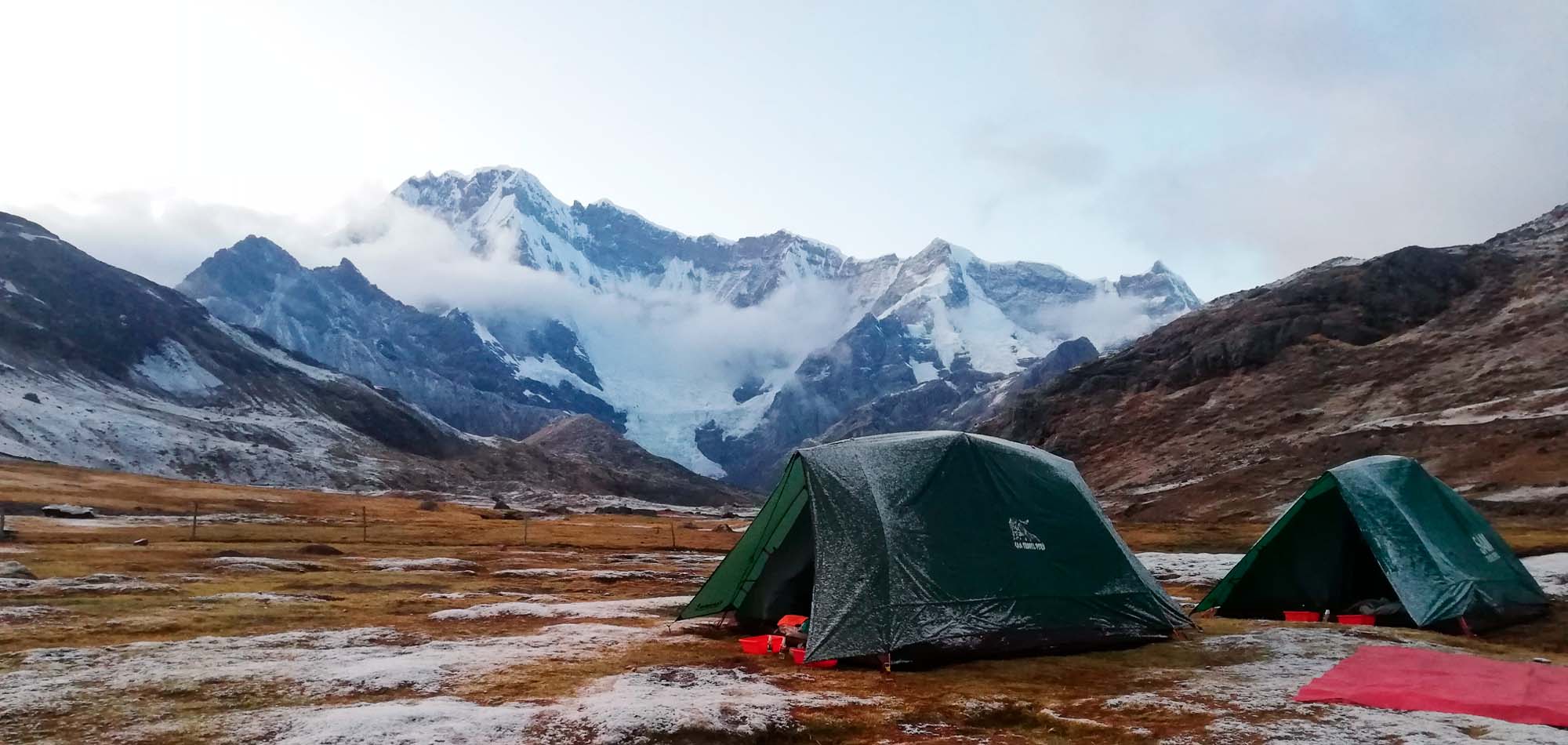
Part of the Vilcanota Mountain Range, Ausangate is a whopping 6384 meters above sea level, making it the 5th largest mountain in Peru. Every year thousands of pilgrims make the journey to this scared mountain a week before Corpus Christi for the festival of Qoyllur Ritti. The local Chillca community who are mainly llama and alpaca farmers are keepers of Ausangate and the surrounding areas. More than just a hike the Ausangate trek is an immersion and opportunty to connect with the local communities on a deep level with the locals that call this area home.
Getting to Ausangate?
Currently there are two ways to get to Ausangate, you can hire a tour operator to take you. Or you can try and get there on your own which can be a bit difficult but possible. If you are going on your own, first you will need to take a bus to the small town of Tinki which takes about 3 hours from Cusco. From the town of Tinki take another 3-hour bus ride to the town of Pacchanta where most of the trails start. If you do not want to deal with the hassle of figuring out transportation yourself then book a tour with a tour operator. You can also make a visit to the nearby world famous Rainbow Mountain and Red Valley.
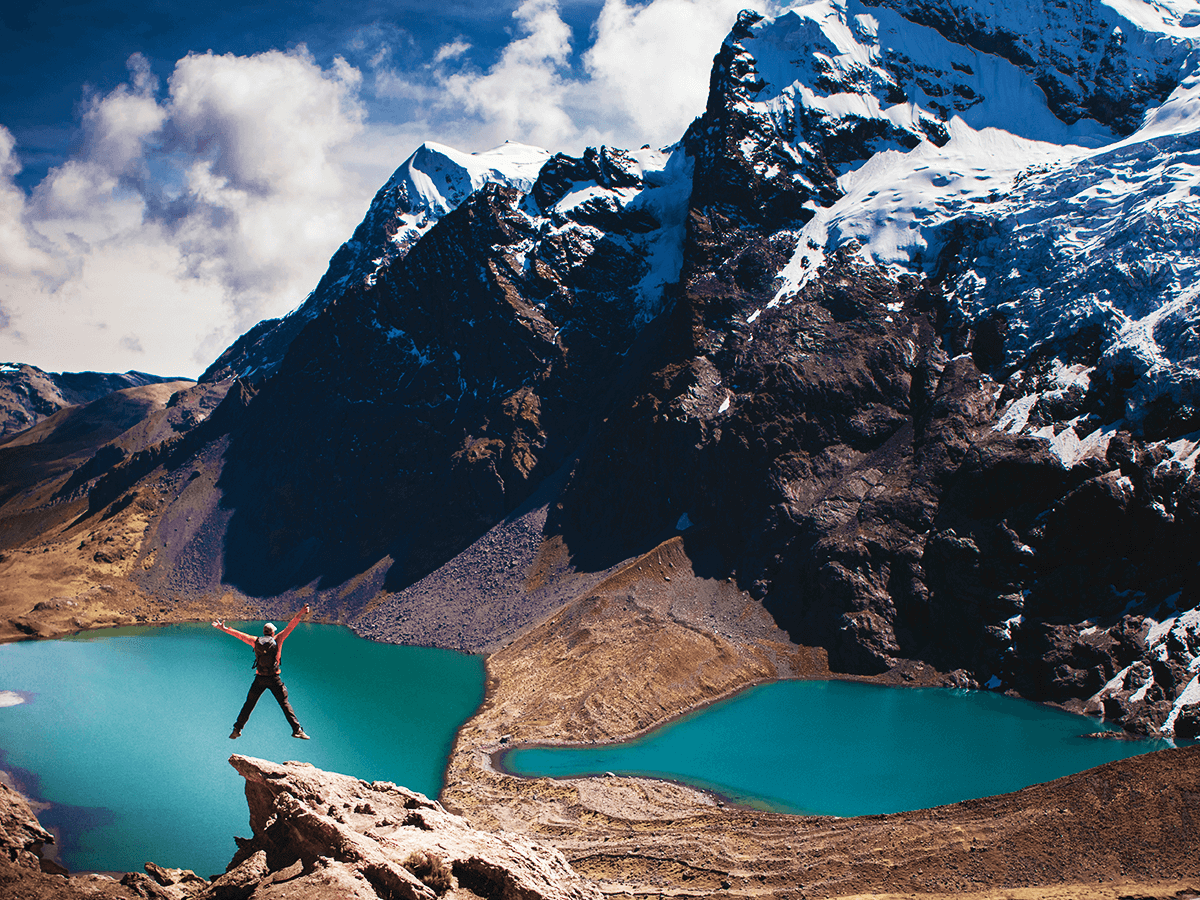
Dealing with the elevation at Ausungate?
Being one of the highest treks in the region you will need to acclimate to the altitude before you even consider attempting this trek. With the altitude never dropping below 4000m this hike is no joke when considering altitude sickness. It’s recommended to stay at least a few days in Cusco or the Sacred Valley before attempting any hikes. There are tours and many things to do and see in Cusco and the Sacred Valley so you won’t feel like you’re wasting your time. Although resting a few days in the region will definitely help, be best prepared if you have the chance to hike a few of the smaller treks before trying Ausangate.
If you still are concerned or are feeling the effects of altitude there are a few different remedies that can help a lot. Drinking lots of water all day and night can make a world of difference. Also drinking coca tea made from the coca leaves themselves or chewing the leaves can have great effects. Additionally, if you are still feeling bad you can go to the local pharmacy and buy altitude pills. Finally, if this is still not enough you can opt for oxygen tanks which your tour company should provide on the hike.
Can you do Ausangate Mountain Trek without a tour?
For the most experienced hikers Ausangate seems like an outdoor wonderland. Hiking the mountain solo is one of the ultimate tests of outdoor aptitude and perseverance. Although you can do this hike solo it’s only RECOMMENDED FOR THE MOST EXPERIENCED OF HIKERS! Because of the high altitude and remoteness of the trail altitude sickness is a very real danger and getting evacuated a very difficult task. If you think you have what it takes to solo this hike then by all means challenge yourself. If you’re not sure and want to take a guided tour, take a look at our recommended tour operators.
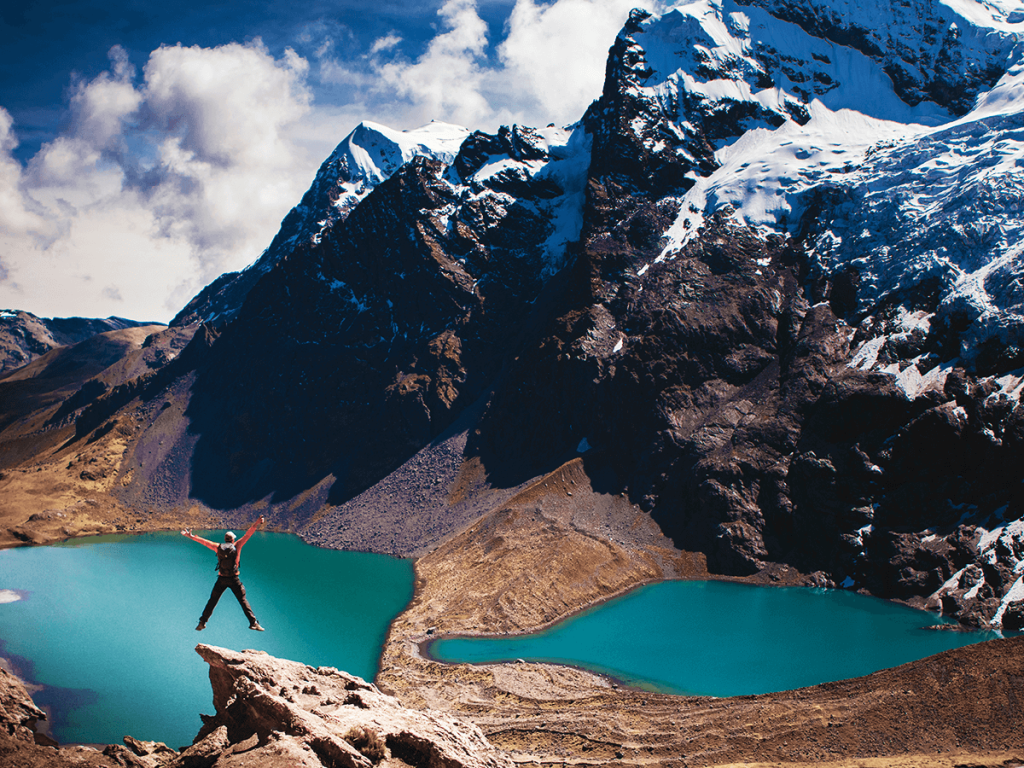
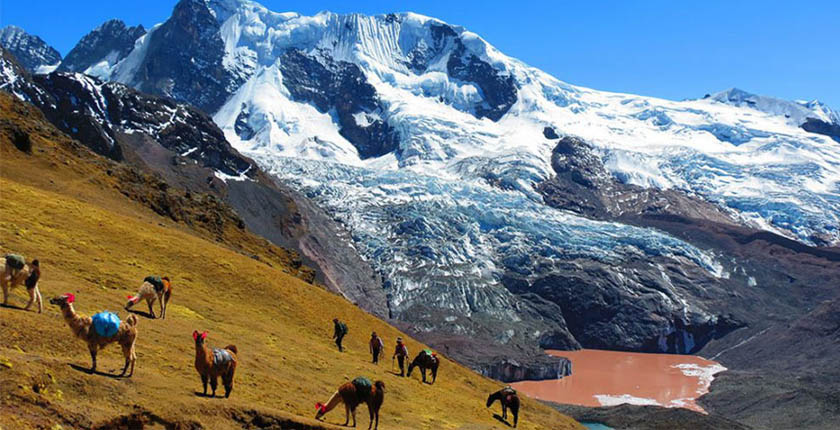

Rainbow Mountain
Is it necessary to acclimate before hiking Rainbow Mountain?
Because of the elevation of Rainbow Mountain 5020m/17060ft it’s absolutely necessary to acclimatize in Cusco or the Sacred Valley for at least a few days before attempting the Rainbow Mountain. If you go the first or second day after arriving in Cusco YOU’RE GONNA HAVE A BAD TIME! If you cannot wait to get on the trail, consider hiking on of the other trial in the region, Rainbow Mountain is one of the highest hikes in the area.
Can you hike Rainbow Mountain solo?
You can hike Rainbow Mountain solo but, getting there might be more of a hassle than it’s worth. If you are looking to save a buck then maybe reconsider going solo. Sometimes the price for transportation can be more expensive. If you want to do it alone for the sake of adventure then by all means do the research and go for it!
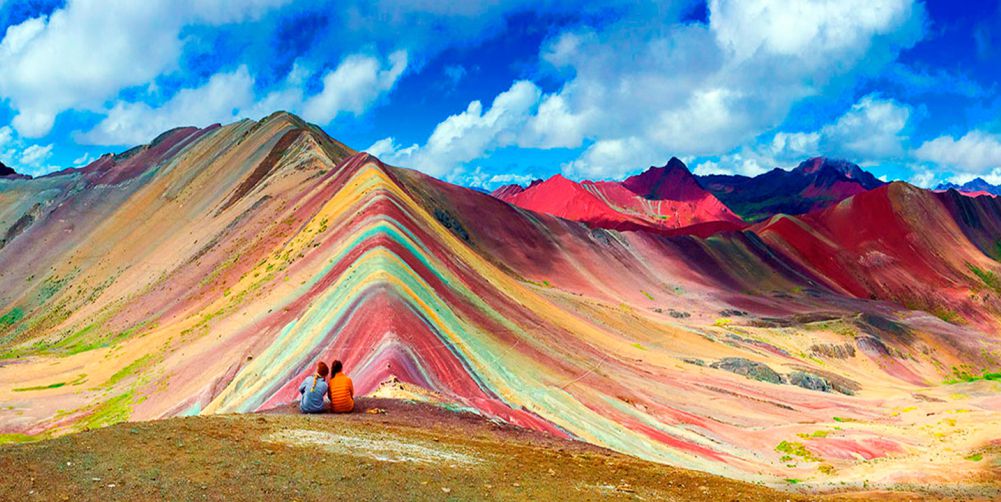
Is Rainbow Mountain worth it?
Yes, it is absolutely worth it to hike Rainbow Mountain. Rainbow Mountain is the second most popular attraction in Peru just after the world-famous Machu Picchu. The mountain has some of the most vibrant colors of any mountain in the world. With a cost averaging from $50 to $150 it’s not terribly expensive so why not hike the mountain?
How much elevation will you gain hiking Rainbow Mountain?
The hike itself is not a long one only 4.4km one way, however, the hike is considered moderately difficult because of the elevation gain. When you arrive at Rainbow Mountain you may think that the hike looks really easy and is you were at sea level it would be. Being above 5000m makes for a world of difference, you will need to pace yourself even if you have acclimatized for a few days. You will gain around 500m during the hike and at high altitudes 500m is no walk in the park.
Nearly anyone can complete this hike especially if you take the proper precautions before and during the hike. Most of the trail is not difficult and has only a gradual incline you will still need to pace yourself and make sure your breathing is even and deep. The last section of the trail is the challenging part. Before getting to the last section, it’s a good idea to take a break catch your breath before pushing on. Pacing yourself and drinking lots of water are the two most effective ways to combat the altitude. Take it slow there is no shame in taking rests and it will make your experience much more enjoyable.
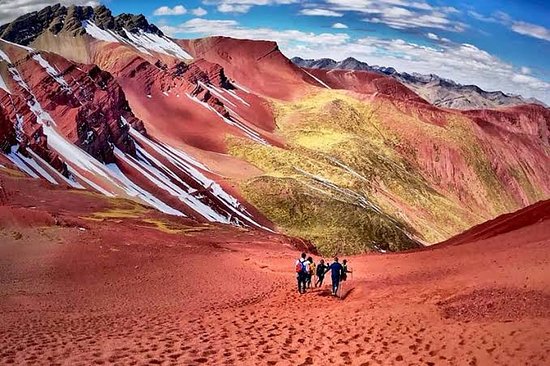
The Red Valley in Cusco – This hike is done right after the Rainbow Mt.
If Rainbow mountain can be compared to a painting or fantasy novel then the Red Valley is from another planet. With soil that looks like its straight from the barren landscape of Mars this valley is one of the most impressive sights in all Peru. The vibrant red contrasts beautifully against the blue skies creating a color pallet that is pure bliss for the eyes. If you dont like all the crowds at Rainbow Mountain, then The Red Valley will be a breath of fresh air. Because it’s an additional 45 mins of hiking there are not nearly as many tourists at The Red Valley compared to Rainbow Mountain. The Red Valley has somewhere around 5% to 10% of the people that Rainbow Mountain has.
The Red Valley location
Close to Rainbow Mountain, The Red Valley is only a 45 min walk from the summit. Near the sacred Ausangate Mountain in the district of Pitumarca, The Red Valley sits at 5 200m above sea level. A 3-hour drive from Cusco if you’re planning a trip to Rainbow Mountain then you should seriously consider visiting The Red Valley.
Which Tour Operator?
There are many travel companies in Cusco and all offer services to and from Rainbow Mountain. It may be difficult when trying to decide which company to trust with you Rainbow Mountain trip. Do your research to find the best company to suit your needs.
Amazing Scenery Every Day.
The Ausangate trek is perfect for you if you enjoy stunning nature and beautiful landscapes. Most of the hike is above the tree line so you will have some of the most amazing 360 view. Have access to some of the most fascinating local villages along the way.
Leaving your luggage behind during the trek.
DO NOT bring your big backpack or luggage with you on the hike. You should be able to store your bags with your tour operator or at your hotel. Once you have completed the hike you can retrieve your things either with your guide or hotel.
How hard is the Ausangate Trek?
The only reason why Ausangate is considered difficult is because you are at high elevation every single day. The hike itself is not too bad or steep most of the hike is a gradual ascent. If you have acclimatized and are in decent to good physical shape this hike should not be a problem. However, you MUST PACE YOURSELF.
Which Ausangate Trek to choose?
There are two types of hikes to Asungate the short 4-day hike and the standard 7-day hike. The 7-day hike is a far better experience and if you have the time you should definitely chose it over the shorter 4-day. The 7-day hike gives you the full Ausangate experience where you get to visit multiple different sites that are not offered in the 4-day hike.
Short Ausangate Trek 4 days
Known as the “Mini Ausangate” the 4-day hike is intended for those who do not have a lot of time to spare. This hike strives to show you all of the must-see locations such as Rainbow Mountain, Ausangate Glacier, and Lake Puca Cocha.
Full Ausangate Trek (5-7 days)
The 7-day Hike to Ausangate is the better option. You’ll hike through many more mountain passes see all of the attractions on the 4-day version and get the opportunity to hike to The Red Valley.
Ausangate compared to other treks
One of the main differences between Ausangate and the other popular hikes in the region is that you cannot get to Machu Picchu from this hike nor Aguas Calientes. If you want to get to Machu Picchu by hiking you’ll have to pick one of the alternatives like the Inca Trail, Lares, Salkantay, or the Inca Jungle. If you have already been to Machu Picchu and are looking for another hike or just want to get away from the crowds Ausangate, is one of the best options.
You do not need a permit to hike Ausangate and therefore do not need to book this hike months in advance.
One of the main attractions to this hike is that it’s the only multi-day hike that offers a visit to the Rainbow Mountain. Other than Ausangate, Rainbow Mountain is only accessible through a day trip. If you would like to camp a few days and see the Rainbow Mountain in the same trip then this is the hike for you!
Combating altitude sickness
Altitude sickness is no joke especially when you are on the trail. The hike to Ausangate is high so altitude sickness is a concern.
What exactly is altitude sickness?
When in high altitude environments the atmosphere is much thinner than at sea level. With the thinner atmosphere brings a reduction in oxygen. The way the body handles the reduction in oxygen can vary greatly from person to person. Generally speaking, most people are fine after a few days but sometimes symptoms can be so bad that people need some type of medical attention.
Symptoms
- Headache
- Nausea
- Fatigue
- Shortness of breath
- Stomach issues
***PLEASE NOTE: If you suffer from shortness of breath even while trying to sleep or you lose consciousness seek medical attention immediately
Preventing Altitude Sickness
The best way to avoid altitude sickness is to ascend slowly. Taking a few days to acclimatize will greatly increase your chances of not developing altitude sickness at all.
But if you do develop symptoms there are many different remedies to soothe your symptoms.
The most ancient and widely used remedy to fight the altitude is coca tea or coca leaves. I know it might seem like snake oil but, it really does work. You can either make a strong tea from the leaves or chew the leaves. Although there is very to little to no studies on the subject the Andean people have been using coca to combat the altitude for thousands of years.
There are also altitude sickness pills for sale at all the local pharmacies if you would like to go the western medicine route this is a great option.
Additionally, abstaining from alcohol on the first day/night and eating very light will make a huge difference. However, perhaps the main way to combat the altitude is to drink plenty of fluids throughout the day and at night.
Ausangate Packing List
- Warm fleace or down jacket
- Thermal shirt and underwear
- Raingear tops and bottoms
- Hat and sunglasses
- Waterproof backpack cover
- Reusable water bottle
- Water filter or iodine tablets
- Trekking poles (for the descent)
- Camera
- Sunscreen
- Snacks
- Camping stove (if hiking solo)
- Tent (if hiking solo)
- First aid kit
When is the best time to hike Ausangate?
The best time of year to hike Ausangate and visit the region in general is during the dry season which is from May to October. During this time of year, you will have the best weather and best trail conditions. Just be aware that this is the high tourist season so crowds will be at an all over the region including The Inca Trail. However, Ausangate is off the beaten path and rarely has crowds even during the high tourist season.
